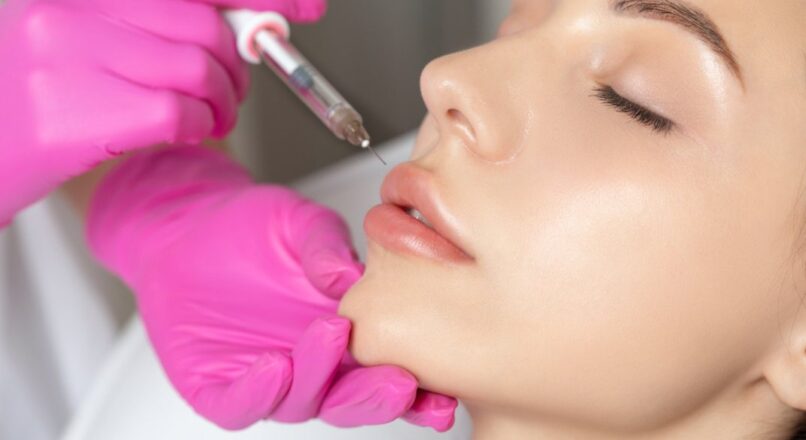
The Environmental Impact of Lip Filler Products in Islamabad
Lip filler treatments have surged in popularity over the past decade, becoming a cornerstone of modern cosmetic enhancements. Their ability to create fuller, symmetrical lips without the need for invasive surgery has attracted individuals across the globe, including in Islamabad. However, with the rising demand for lip filler injections in Islamabad, questions arise about the environmental footprint of these products and procedures. From manufacturing to disposal, let’s explore the ecological impact of lip fillers and what can be done to mitigate it.
Understanding the Composition of Lip Fillers
Lip fillers, commonly composed of hyaluronic acid (HA), are designed to mimic substances naturally found in the body. While HA itself is biodegradable and safe for human use, its production often involves industrial processes with environmental implications:
- Raw Material Extraction:
- Hyaluronic acid is often derived from bacterial fermentation or animal sources, both of which can have environmental impacts. For instance, large-scale fermentation requires significant water and energy resources.
- Chemical Additives:
- Many lip filler products include stabilizers and cross-linking agents to improve longevity. These chemicals may not be biodegradable and can contribute to environmental pollution if not disposed of responsibly.
- Packaging Waste:
- Single-use syringes, plastic packaging, and other disposable materials associated with lip fillers contribute to medical waste, much of which ends up in landfills.
Carbon Footprint of the Cosmetic Industry
The cosmetic industry, including the production of lip fillers, has a considerable carbon footprint. Factors contributing to this include:
- Energy Consumption:
- Manufacturing facilities require significant energy to produce, sterilize, and package fillers.
- Transportation:
- Lip fillers are often shipped globally, adding to the carbon emissions through air and land freight.
- Disposal:
- Improper disposal of expired products and packaging materials can lead to environmental harm, particularly in areas without adequate waste management systems.
Sustainable Practices in the Lip Filler Industry
To address these environmental challenges, the cosmetic industry is gradually embracing sustainability. Innovations and practices aimed at reducing the environmental impact of lip filler products include:
1. Eco-Friendly Ingredients
- Researchers are developing hyaluronic acid alternatives derived from renewable sources, minimizing the reliance on energy-intensive fermentation processes.
2. Biodegradable Packaging
- Some companies are adopting biodegradable or recyclable packaging materials to reduce waste.
3. Green Manufacturing Processes
- Energy-efficient production methods and the use of renewable energy sources are being integrated into the manufacturing of cosmetic products, including lip fillers.
4. Recycling Programs
- Clinics and manufacturers are introducing take-back programs to ensure that used syringes and packaging are disposed of responsibly or recycled.
Consumer Responsibility in Reducing Environmental Impact
While manufacturers and clinics play a vital role, consumers also have a part to play in minimizing the environmental impact of their cosmetic choices:
- Choose Sustainable Brands:
- Opt for clinics and brands that prioritize sustainability in their products and practices.
- Educate Yourself:
- Learn about the ingredients and manufacturing processes of the products you choose.
- Proper Disposal:
- Dispose of syringes and packaging materials responsibly, following local medical waste guidelines.
Dynamic Clinic’s Commitment to Sustainability
In Islamabad, clinics like Dynamic Clinic are taking steps to address the environmental concerns associated with lip filler treatments. By incorporating sustainable practices, they are setting an example for responsible cosmetic care. These efforts include:
- Using high-quality, eco-friendly products.
- Implementing waste reduction strategies.
- Educating clients about responsible cosmetic choices.
The Path Forward: Balancing Beauty and Sustainability
As the demand for lip filler treatments in Islamabad continues to grow, striking a balance between aesthetic enhancement and environmental responsibility is crucial. Here’s how the industry can achieve this:
- Increased Transparency:
- Manufacturers and clinics should provide clear information about the environmental impact of their products and practices.
- Stronger Regulations:
- Governments and regulatory bodies can enforce stricter guidelines for sustainable production and waste management in the cosmetic industry.
- Investment in Research:
- Continued research into biodegradable materials and green production methods will pave the way for more sustainable solutions.
Conclusion
The environmental impact of lip filler products is a pressing concern that demands action from all stakeholders—manufacturers, clinics, and consumers. By embracing sustainable practices, the cosmetic industry can minimize its ecological footprint while continuing to meet the growing demand for aesthetic treatments. In Islamabad, clinics like Dynamic Clinic are leading the charge in providing environmentally conscious cosmetic solutions. To learn more about their services and commitment to sustainability, visit the Dynamic Clinic website today.

Leave a reply